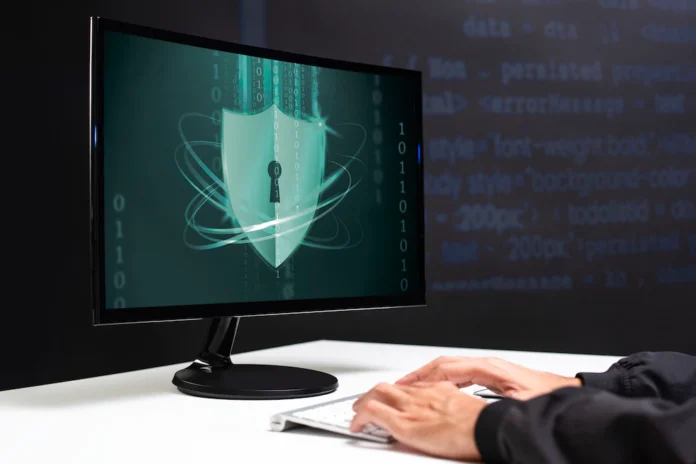Browser isolation is a cybersecurity strategy that puts a barrier between a user’s browsing activity and the server environment in which they are working. Separation hinders malicious applications from accessing the user’s computer. The elements are also hindered from getting out from the user to the server.
Due to this, the probability of attacks is significantly reduced. This strategy is widely used by organizations that allow their employees uncontrolled access to the internet but still want to ensure their network systems are secure. Isolation can be compared to desktop virtualization. The only difference is that isolation involves the browser only and not the entire desktop.
What is network isolation in cybersecurity?

Network isolation, also referred to as segmentation, is the idea of creating silos within a computer network. These silos are known as Virtual Local Area Networks (VLANs). Their work is to detach assets within the network based on security levels and needs. Isolation is done deliberately to prevent malicious attacks or undesired network interactions. In an isolated browser environment, each part, such as the application, endpoint, network, and cloud, remains separated from every risky online condition. Although the entities are separated, they remain interconnected and communicate with each other within a secure environment.
How do isolated environments work?

The purpose of isolated environments is to prioritize IT security in an organization. The strategy removes browsing activities from the user end and executes them in a remote environment. The technique is automated to destroy the browsing activities once each session closes. If a user interacts with malicious elements, it is destroyed at the end of the activity. The next time the user connects to the same environment, they will find a fresh image that is clean from any malicious elements. Isolation helps the user browse the web remotely while keeping harm away from his computer.
Key features of a browser isolation solution

A browser isolation solution is composed of 8 key components:
• Client: The client is an end-user interface that initiates website requests. In an isolated environment, the client side is separate from the hosting side. In a local network, both the client and isolation solution can dwell in the same place.
• Threat Isolation Engine: This component is configured to allow some browser activities to pass through in some users and to block others. The engine runs requests by the client based on the way it is configured.
• Hosting environment: This is a third-party cloud where the entire web isolation engine sits. It never interferes with the local user infrastructure. The hosting environment can either be located in a private cloud, on-premise server, or a remote environment.
• Web security service: A service software should decide the traffic to be contained and how to do it. The application comes with an isolation solution built into it. The organization then configures it to fit its needs.
• Public web: In a situation where the client is the entire traffic destination, its origin is the public web. The client makes requests, and the public web initiates the response. The response, however, is not sent directly to the client but through the isolation environment.
• Web socket: Data between the client and the web security application flows through the web socket. It helps users interact with web browsers in real-time.
• Secure and disposable container: This is a standalone application that works independently within an isolated environment. The features are applied in a cloud environment. It packages apps for ease of their portability. The disposable container is initiated by the web security service. Once that browsing session ends, the container is destroyed immediately.
• Content: Content is the data that is moving in and out of the isolation environment. Some of it can be harmless, while some might be harmful. Depending on its configuration, the user may, at times, view all content. At other times, the content is filtered, and any malicious data is blocked.
Types of browser isolation

Isolated browser environments can be divided into two:
Remote isolation
Remote isolation is done on a remote server. That means the user end is located far from the server. All browsing activity of the user is transferred to the remote server so that the user receives only what is happening in the remote virtual environment in real-time. The server can either be hosted in the cloud or on-premise. The isolation technology filters out what it considers malicious and allows safe content to reach the user end. Check this article for an in-depth look.
Local isolation
In this isolation, a virtual machine or a sandbox is installed on the user’s computer. Its purpose is to filter data and remove all malicious web content before it is displayed on the user’s screen. It is the traditional isolation method known by most people.
Importance of using isolation tools

Web security is important in both small and large organizations. Every entity can suffer a serious impact if its data security is breached. Isolation is required by organizations due to various reasons.
Dangers paused by web browsing
Organizations need to use web browsers for enhanced productivity. Web browsing is becoming more complex and harder to secure. One malicious code in the company network can cause devastating effects. Isolation is an excellent way to secure web browsing.
Many users are exposed to security risks
Most users are not keen on their online security when connecting to an organization’s network. They might click a malicious link, and it infects an entire network. It is safer if such links are blocked before they reach the user.
Isolation complements other online security measures
Organizations implement strong online security measures. Despite the measures, sometimes attacks still happen, especially when the organization is managing multiple user ends. Isolation solutions block access by suspicious websites. It helps complement the other cybersecurity installations.
Conclusion
Workstyle has changed recently, and websites and web applications have become the center of an organization’s workflow. Companies must pay attention to browsing safety and web-based communication. SonicWall report shows that malicious attacks in 2025 have increased to 40 million per month. Isolated environments are one of the top defenses against such attacks. The result of safe browsing is increased productivity.









